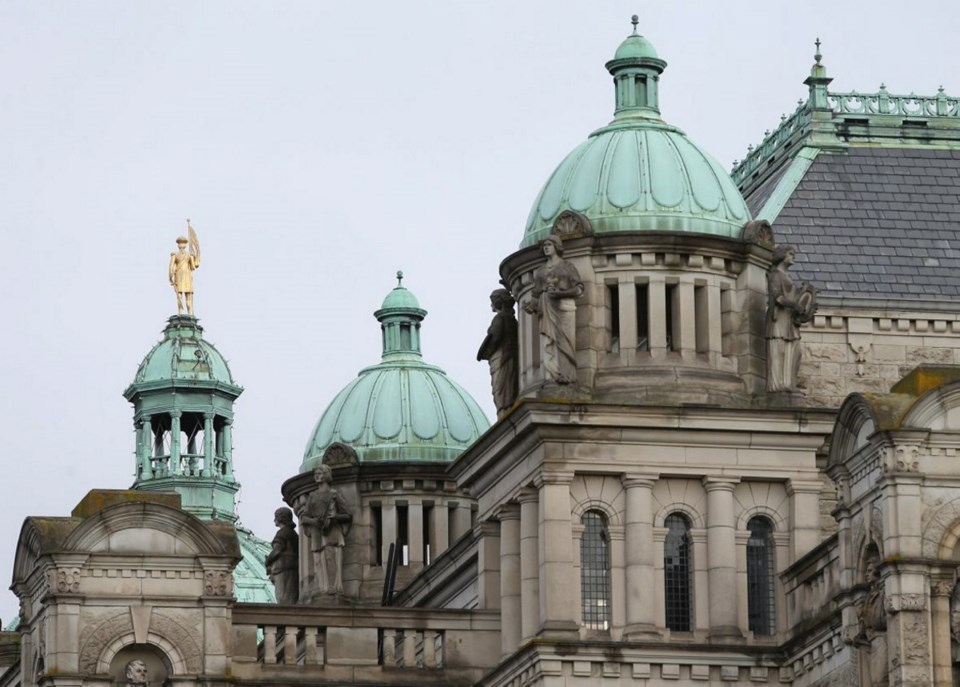The world suffered a pandemic a decade ago of a different sort. It was the banks that got sick, not people. But some of the impacts of the economic meltdown brought on by the banking collapse in 2008 might turn out to be similar.
There hasn’t been much official notice so far about the economic impact of the COVID-19, other than a Bank of Canada rate cut — similar to what it did during the financial meltdown. Governments are too busy at the moment dealing with the virus itself to dwell on the economic implications.
But there’s not much doubt they’re coming. It could easily just be a short-term hit of a few months, while governments contain the virus. Or the economic impact could last longer.
It’s not so much the virus that will hit the economy, it’s the countermeasures to delay and contain the spread. They are considered necessary, but they’re so sweeping they’re going to create costs that have to be paid for eventually.
The B.C. experience from a decade ago might have some hints about what lies ahead. In that case, the fiscal crisis was serious enough that the B.C. Liberal government abandoned its core belief that budgets should be balanced.
It budgeted for a deficit but was then blindsided when revenues dropped and the projected shortfall eventually grew to five times the first estimate.
There was a need to spend more, but it was mostly the collapse in revenues that initially drove the government deep into the red.
This time around, there will obviously be a spending increase to grapple with the virus. (Ottawa put up $1 billion more on Wednesday).
Today’s provincial government has about a half-billion dollar cushion by way of a projected surplus and a forecast allowance, plus several hundred million more in contingencies.
That might be enough.
But the idea of budgeting for the response is just in the sense of keeping track of the cost, not estimating or limiting it.
The government posts a nominal dollar amount every year to fight forest fires, but generally spends whatever it takes. COVID-19 will likely be treated similarly.
It’s on the revenue side where the impact will really hit the government. The countermeasures under active discussion — delaying the cruise ship season is one example — will undercut revenue estimates from many streams that flow into the treasury.
The former government’s story about the banking collapse is that revenues dropped enough that it had to go into the red. Then they collapsed much more than anticipated, and the deficit ballooned.
The fact an election intervened in the middle of that timeline prompted immense skepticism about what they knew, when.
Finance Minister Carole James was opposition leader at the time and led the charge when it came to raising suspicions.
There’s unlikely to be a big political argument this time around if the NDP budget starts to change dramatically, or even if it falls into the red. Because the reasons will be obvious.
The biggest impact of the financial crisis in B.C. was that the resulting huge deficit panicked the Liberals into adopting the harmonized sales tax. Ottawa offered a huge reward for doing so, and the provincial government needed every nickel it could get.
That turned into a long-running political nightmare that James was only too happy to watch from the sidelines.
She must have learned some lessons from that experience, so sudden tax lurches to cope with whatever happens to the books are unlikely.
It took the Liberals four years to climb out of the red.
James’s budget last month made no mention of the coronavirus, which was just in the process of taking off at the time.
Looking at it now, in light of COVID-19’s dominance of all agendas, the $227 million projected surplus for the year starting in April looks even thinner than it did then.
“Social distancing” is the new guiding principle and it means limiting contact in countless ways. It also inevitably means curtailing the provincial economy for an indefinite period.
There’s always a lag in getting real-time snapshots of what the economy is doing. When they do start arriving, they aren’t going to be easy reading.



